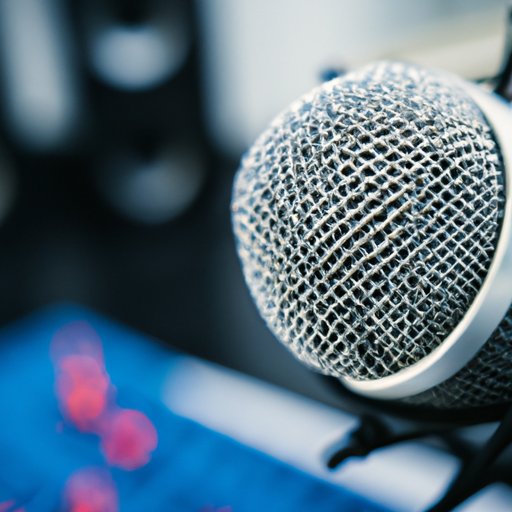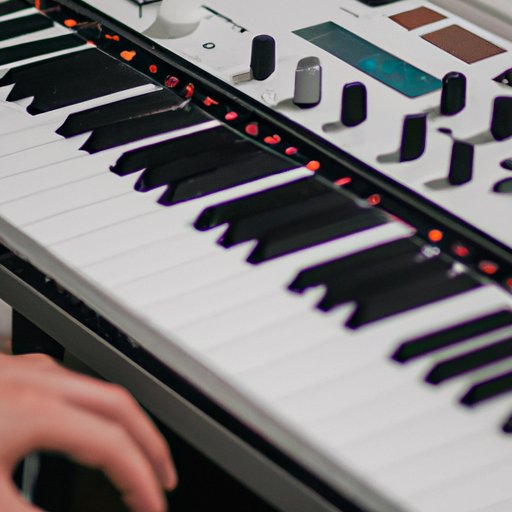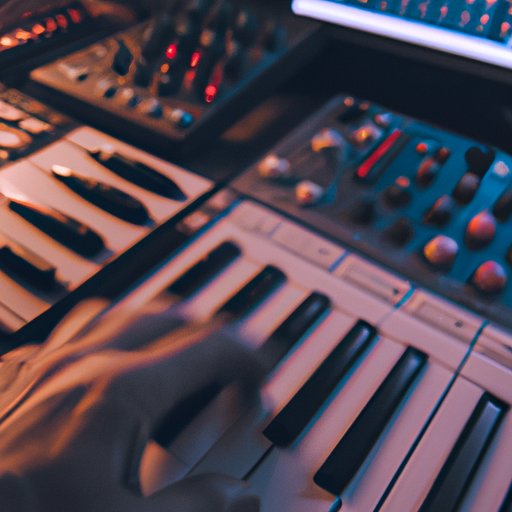Introduction
Recording and playing music are two of the most important aspects of producing music. Recording involves capturing sound waves from a microphone or other source, while playing is the process of listening to, manipulating and editing the recorded sound. In this article, we will explore the various tools and techniques used to record and play music, including digital audio workstations (DAWs), microphones, synthesizers, MIDI controllers, sampling techniques, looping tools, and post-production effects.
Use of Digital Audio Workstations
A digital audio workstation (DAW) is a software program that allows users to record, edit, mix, and master audio. It is an essential tool for any music producer, as it provides a comprehensive set of features that allow users to quickly and easily create professional-sounding recordings. DAWs typically include tools such as virtual instruments, recording and editing functions, mixing tools, and mastering tools.
The benefits of using a DAW are numerous. For example, they allow producers to quickly and easily edit and mix their recordings, as well as apply effects such as compression, EQ, and reverb. Additionally, many DAWs come with a library of virtual instruments, which can be used to create unique sounds and textures. Popular DAWs include Ableton Live, Logic Pro, Pro Tools, and FL Studio.

Utilizing Microphones and Audio Interfaces
Microphones are essential for recording sound. They capture sound waves from a variety of sources, including vocals, guitars, drums, and more. There are several types of microphones available, including dynamic, condenser, and ribbon mics. Each type of mic has its own unique characteristics and should be chosen based on the source being recorded.
In addition to microphones, an audio interface is also necessary for recording. An audio interface is a device that allows users to connect microphones and other audio equipment to a computer. It acts as the bridge between the analog and digital worlds, allowing users to capture high-quality recordings without the need for expensive outboard gear.
The benefits of using an audio interface are numerous. For example, they provide better sound quality than a basic sound card, as well as better control over levels, latency, and other parameters. Additionally, some audio interfaces also come with preamps, compressors, and other features that can help improve the overall sound of a recording.

Employing Synthesizers and MIDI Controllers
Synthesizers and MIDI controllers are powerful tools for creating electronic music. A synthesizer is an electronic instrument that creates sound by generating waveforms, while a MIDI controller is a device that sends and receives musical information from a computer. Together, these two devices can be used to create unique and interesting sounds.
The benefits of using synthesizers and MIDI controllers are numerous. For example, they allow producers to experiment with different sounds, as well as automate certain processes such as tempo changes, filter sweeps, and more. Additionally, they can be used to create realistic sounding drum patterns, bass lines, and other elements.
Synthesizers and MIDI controllers can be connected to a DAW via USB or MIDI cables. Once connected, they can be used to control virtual instruments, as well as send and receive MIDI data. Additionally, some DAWs also allow users to map the controls of a synthesizer or MIDI controller directly to the software, allowing for greater flexibility when creating and manipulating sounds.
Exploring Sampling Techniques
Sampling is one of the most popular techniques used by music producers today. It involves taking a small section of a sound recording, such as a vocal line, guitar riff, drum beat, or any other sound, and manipulating it to create something entirely new. Sampling is often used to add texture and depth to a track, as well as create unique and interesting sounds.
The benefits of sampling are numerous. For example, it allows producers to quickly and easily create new sounds from existing recordings. Additionally, it can be used to create complex rhythmic patterns, as well as to add texture and character to a track. Furthermore, sampling can also be used to create mashups, remixes, and other forms of music.
There are several different sampling techniques that producers can use. These include chopping, resampling, time stretching, and looping. Additionally, some DAWs also come with built-in samplers, which can be used to quickly and easily manipulate sounds.
Exploiting Looping Tools
Looping is another popular technique used by music producers. It involves repeating a section of a sound recording, such as a vocal phrase, drum beat, or any other sound, to create a repetitive pattern. This technique can be used to create complex rhythms, as well as add texture and interest to a track.
The benefits of using looping tools are numerous. For example, they allow producers to quickly and easily create complex patterns and rhythms. Additionally, they can be used to create intricate arrangements, as well as to add texture and character to a track. Popular looping tools include Ableton Live’s Loopbrary, Logic Pro’s Loop Browser, and Native Instruments’ Reaktor.
Understanding Post-Production Effects
Post-production effects are used to enhance the sound of a recording. These effects can be used to add warmth, clarity, and depth to a track, as well as create unique textures and sounds. Common post-production effects include reverb, delay, compression, EQ, saturation, chorus, and flanging.
The benefits of using post-production effects are numerous. For example, they allow producers to quickly and easily enhance the sound of a recording. Additionally, they can be used to create unique sounds and textures, as well as to add depth and clarity to a track. Popular post-production effects plugins include Waves, FabFilter, and iZotope.
Conclusion
Recording and playing music involve a variety of tools and techniques. These include digital audio workstations, microphones, synthesizers, MIDI controllers, sampling techniques, looping tools, and post-production effects. Each of these tools and techniques offers its own unique benefits and can be used to create professional-sounding recordings.
In conclusion, recording and playing music are two of the most important aspects of producing music. By understanding the various tools and techniques used to record and play music, producers can create high-quality recordings and bring their ideas to life.
(Note: Is this article not meeting your expectations? Do you have knowledge or insights to share? Unlock new opportunities and expand your reach by joining our authors team. Click Registration to join us and share your expertise with our readers.)
